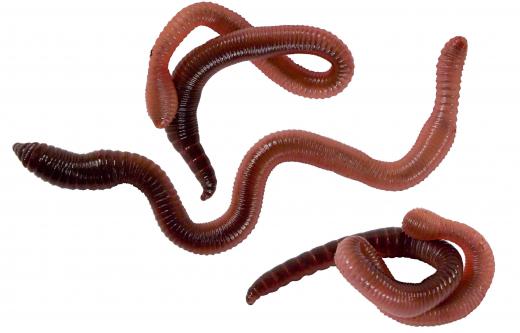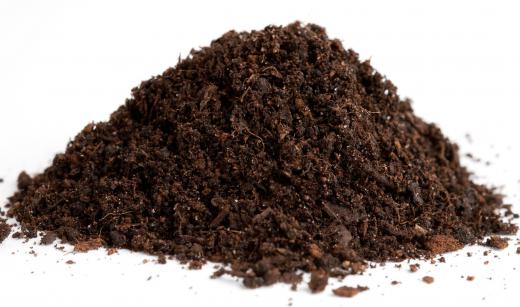What is Deposit Feeding?
 Michael Anissimov
Michael Anissimov
Deposit feeding is one of five feeding modes used by organisms to obtain food, the others being fluid feeding, filter feeding, bulk feeding, and phagocytosis. Deposit feeders obtain food particles by sifting through soil, vaguely analogous to the way that filter feeders get food by filtering water. Prominent examples are earthworms, other annelids such as polychaete worms, and fiddler crabs. Insects and their larvae, which may burrow through living or dead plants and animals, or feces, are also considered deposit feeders.
Deposit feeding is a feeding strategy that only works in fertile areas with a lot of preexisting life. The top layer of soil is targeted, typically within six inches of the surface, as this is the soil most likely to contain food particles that haven't been completely broken down yet. Biologists call these food particles detritus. After detritus has been broken down to a chemically neutral state, it becomes known as humus. Humus has a black color due to its high carbon content.

Among deposit feeders, precise strategies vary. Earthworms are unique animals in the world of deposit feeding, and in general, by having an oral cavity that connects directly to their digestive system without any intermediary. Lauded for their benefits to the soil, of earthworms, Charles Darwin wrote, "It may be doubted whether there are many other animals which have played so important a part in the history of the world, as have these lowly organized creatures." By breaking detritus into humus, breaking soil down into tiny pieces that maximize available nitrogen and phosphates for plants, and aerating the ground by poking it full of tunnels, earthworms have a trifold benefit for the earth and its plants.

Besides earthworms, terrestrial deposit feeding is practiced by fiddler crabs. These crabs pick up little balls of dirt, reach them to their mouths, and pick out any edible material, including colonies of microbes. Then, the spheres are discarded as quickly as they were picked up. These little dirt spheres can be found wherever fiddler crabs dwell.

There are marine species that practice deposit feeding as well, which burrow through the ooze on the ocean floor. These include polychaete worms, some bivalves, and giant protozoa called xenophyophores. Marine deposit feeders are more poorly understood due to their remote location and fragility when brought to the surface.
AS FEATURED ON:
AS FEATURED ON:













Discussion Comments
Earthworms can move in almost any twisty position because of the lack of a skeleton so they are called invertebrates. The worm has a series of fluid filled sacs called coelom that act as a spine. This means it moves and crawls using a type of hydraulic system.
Earthworms are hermaphrodites and so carry both female and male sexual organs.
The interesting thing about earthworms is that they can regenerate lost parts. This ability is different among the many species of worms. There is a species that has even been known to regrow a second head.
Post your comments